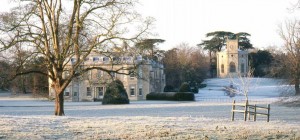 Hotel Information: As royal residences go, Hartwell House is on the modest side: but as country house hotels within 30 minutes of the M25 go, it is quite unique. A seventeenth-century stately home set in 90 acres of parkland, where cows graze beyond the ha-ha and swans float on the lake, Hartwell is an oasis of calm and elegance within striking distance of the bustle of London. It is worlds apart. And its rare mix of convenience and grandeur have made it an ideal spot for VIPs such as President Clinton to base their visits to the capital. But Clinton was not the first, nor the grandest, guest of honour here. In the dark days of the French Revolution, the younger brother of Louis XIV escaped from Paris disguised as an Englishman and – after time on the run in Germany, Italy, Latvia and Poland – sought sanctuary in England. In 1809, with help from the Marquess of Buckingham, he made Hartwell his base for the duration of his exile. Perhaps he was attracted by the almost French severity of its classical architecture, or the incredibly grand mainstaircase, where Jacobean statues of soldiers salute you as you ascend. Certainly he liked the closeness to London, from where a stream of politicians and plotters visited him.
Hotel Information: As royal residences go, Hartwell House is on the modest side: but as country house hotels within 30 minutes of the M25 go, it is quite unique. A seventeenth-century stately home set in 90 acres of parkland, where cows graze beyond the ha-ha and swans float on the lake, Hartwell is an oasis of calm and elegance within striking distance of the bustle of London. It is worlds apart. And its rare mix of convenience and grandeur have made it an ideal spot for VIPs such as President Clinton to base their visits to the capital. But Clinton was not the first, nor the grandest, guest of honour here. In the dark days of the French Revolution, the younger brother of Louis XIV escaped from Paris disguised as an Englishman and – after time on the run in Germany, Italy, Latvia and Poland – sought sanctuary in England. In 1809, with help from the Marquess of Buckingham, he made Hartwell his base for the duration of his exile. Perhaps he was attracted by the almost French severity of its classical architecture, or the incredibly grand mainstaircase, where Jacobean statues of soldiers salute you as you ascend. Certainly he liked the closeness to London, from where a stream of politicians and plotters visited him.
Whatever the reason, he installed 140 courtiers and servants in the place, had vegetables grown for the table and chickens and rabbits kept on the roof. It was here – actually in what is now the hotel bar – that news arrived in 1814 of the fall of Napoleon and the restoration of the French monarchy. In the old library he signed the document confirming his succession to the throne. And from the Great Hall he departed to become king Louis XVIII of France. The hand-to-mouth existence of the French court-inexile must have made Hartwell feel rather more crowded than it does today. Since being converted to a hotel in 1989, it has been redecorated in a spacious neo-Georgian style, with oversize four-poster beds in most of the bedrooms. But many original traces of the period do survive, particularly in the grand library, where wildly ornate plasterwork from 1759 surrounds tall bookshelves fronted by the finest rococo wire-work in the country. The Great Hall is as created by the distinguished architect James Gibbs in 1740, with a vast neo-classical scene on the ceiling and royal portraits topped with plaster swags and birds. And the gardens are graced with buildings by Gibbs. Even the more recent additions, catering for the demands of modern guests, are suitably Georgian. The swimming pool is a mock-Regency delight, flanked by classical statues and urns. And the dining room is modelled on one that Sir John Soane designed for Number 11 Downing Street. The cooking, on the other hand, is utterly up-to-date and utterly enjoyable. After all of which, a plate of petits fours beside a fluttering fire in the shadows of the library is a delicious ending to a splendid day. In such a setting, you could indeed feel like a king.
